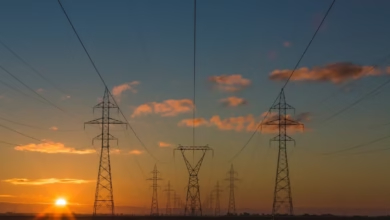Transforming Energy: Navigating the Future of Renewables and the Path to a Low-Carbon Economy

As the world grapples with the pressing challenges of climate change and environmental degradation, the shift towards renewable energy sources has become not just a necessity but a global imperative. Solar, wind, and hydrogen power are at the forefront of this energy revolution, offering sustainable alternatives to traditional fossil fuels. Governments worldwide are recognizing the need for urgent action, implementing a range of incentives to facilitate the transition to clean energy and reduce greenhouse gas emissions. However, this transition is not without its hurdles. Energy storage remains a critical challenge, as the intermittent nature of renewable sources demands innovative solutions to ensure a reliable power supply. Additionally, the future of nuclear energy presents both opportunities and concerns in a low-carbon landscape. As oil and gas companies adapt to this changing paradigm, the role of electric vehicles emerges as a crucial factor in diminishing fossil fuel dependency. Fluctuations in energy prices further complicate the economic landscape, while innovations in energy efficiency promise significant cost savings and enhanced sustainability. This article delves into these interconnected themes, exploring how they shape our energy future and the collective efforts required to create a cleaner, more resilient world.
- 1. **Harnessing Nature: The Growth of Solar, Wind, and Hydrogen Energy**
- 2. **Policy Power: Government Incentives Driving the Clean Energy Revolution**
1. **Harnessing Nature: The Growth of Solar, Wind, and Hydrogen Energy**
The global transition to renewable energy sources has gained significant momentum, particularly in harnessing solar, wind, and hydrogen power. Solar energy, characterized by its scalability and decreasing costs, has become one of the most accessible forms of renewable energy. Innovations in photovoltaic technology and large-scale solar farms have enabled countries to harness sunlight effectively, turning it into a viable alternative to traditional fossil fuels. With advancements in energy storage and grid integration, solar power is increasingly capable of meeting peak demand and providing consistent energy supply.
Wind energy has also experienced remarkable growth, driven by advancements in turbine technology and increased efficiency. Onshore and offshore wind farms are being deployed at unprecedented rates, capitalizing on natural wind patterns to generate significant amounts of electricity. Governments worldwide are investing in infrastructure and offering incentives to stimulate the development of wind energy projects, recognizing its potential to contribute to national energy goals and reduce greenhouse gas emissions.
Hydrogen energy, often viewed as the fuel of the future, is gaining attention due to its versatility and potential for decarbonization. Hydrogen can be produced from renewable sources through electrolysis, allowing it to serve as a clean energy carrier. As industries, particularly those that are hard to electrify, seek low-carbon solutions, green hydrogen is emerging as a key player in the energy transition. Investment in hydrogen infrastructure and technology is on the rise, with governments and private sectors collaborating to develop efficient production methods and distribution networks.
Together, these renewable energy sources represent a significant shift in how we generate and consume energy. As countries strive to reduce their carbon footprints and combat climate change, the growth of solar, wind, and hydrogen power will play a critical role in creating a sustainable energy future. The transition is supported by favorable policies and public awareness, further propelling the momentum toward a cleaner, more resilient energy landscape.
The transition to renewable energy sources, such as solar, wind, and hydrogen power, has gained significant momentum in recent years, driven by both environmental concerns and economic opportunities. Governments worldwide are implementing a variety of incentives to support this shift, including tax credits, subsidies, and grants for renewable energy projects. These measures aim to lower the initial investment costs for solar panels, wind turbines, and hydrogen production facilities, making clean energy more accessible to businesses and consumers alike.
However, the widespread adoption of renewable energy faces significant challenges, particularly in energy storage. Unlike fossil fuels, renewable sources are intermittent, meaning they do not produce energy consistently. Advances in battery technology and other storage solutions are crucial to overcoming this hurdle, as they can store excess energy generated during peak production times for use during periods of low generation. Research and development in this area are essential for creating a resilient and reliable renewable energy infrastructure.
In parallel, the future of nuclear energy remains a contentious yet pivotal topic in the discourse on low-carbon energy solutions. With its ability to provide a stable, large-scale energy supply without greenhouse gas emissions during operation, nuclear power is being revisited as a complement to renewable sources. Innovations in nuclear technology, such as small modular reactors (SMRs), promise enhanced safety and efficiency, positioning nuclear energy as a viable player in the transition to a sustainable energy landscape.
As the energy sector transforms, traditional oil and gas companies are also adapting to the changing landscape. Many are diversifying their portfolios to include renewable energy projects and investing in technologies that facilitate the transition, such as carbon capture and storage (CCS). This strategic pivot not only mitigates risks associated with fossil fuel dependency but also aligns with global sustainability goals.
Electric vehicles (EVs) play a crucial role in reducing fossil fuel dependency by offering consumers a cleaner alternative for transportation. As EV adoption increases, so does the demand for renewable energy to power them, creating a positive feedback loop that can significantly lower emissions in the transportation sector.
The economic impact of energy price fluctuations is another critical factor that cannot be overlooked. As the world transitions to cleaner energy sources, price volatility in oil and gas markets can affect global economies, influencing everything from manufacturing costs to consumer prices. This underscores the importance of establishing a stable energy market that prioritizes renewable sources.
Finally, innovations in energy efficiency are proving essential for maximizing cost savings and minimizing waste. From smart grid technology to energy-efficient appliances, advancements in this field can contribute significantly to reducing overall energy consumption, further supporting the transition to a sustainable energy future. By embracing these innovations, industries and households alike can play a vital role in fostering a cleaner, more resilient energy landscape.
2. **Policy Power: Government Incentives Driving the Clean Energy Revolution**
Governments around the world are recognizing the urgent need for a transition to clean energy to combat climate change, reduce greenhouse gas emissions, and foster sustainable economic growth. To facilitate this shift, many are implementing a variety of incentives designed to encourage the adoption of renewable energy sources such as solar, wind, and hydrogen power.
Financial incentives play a crucial role in this transition. Tax credits, grants, and subsidies are commonly used to lower the upfront costs associated with installing renewable energy systems. For instance, the Investment Tax Credit (ITC) in the United States offers a significant tax reduction for solar energy investments, making it more accessible for homeowners and businesses alike. Similarly, many countries provide feed-in tariffs or power purchase agreements that guarantee fixed prices for electricity generated from renewable sources, ensuring a stable revenue stream for producers.
In addition to direct financial incentives, governments are also establishing regulatory frameworks that support clean energy development. This includes renewable portfolio standards (RPS), which require utility companies to obtain a certain percentage of their energy from renewable sources. By creating a market demand for clean energy, these policies stimulate investment and innovation within the sector.
Moreover, public funding for research and development is critical for advancing renewable technologies. Governments are investing in initiatives that promote innovation in energy storage, grid integration, and efficiency improvements, helping to overcome some of the technical challenges associated with renewable energy deployment.
International cooperation also plays a vital role in driving the clean energy revolution. Through agreements like the Paris Accord, countries are committing to ambitious climate goals that necessitate a rapid transition away from fossil fuels. This global framework encourages nations to share best practices, technologies, and funding to accelerate the adoption of renewable energy.
As a result of these concerted efforts, the renewable energy sector is witnessing unprecedented growth. The investments and policies enacted today will shape the energy landscape of tomorrow, paving the way for a more sustainable and resilient future.
In conclusion, the transition to renewable energy sources such as solar, wind, and hydrogen is not just an environmental necessity but an economic opportunity that is reshaping the global energy landscape. Governments worldwide are playing a crucial role by implementing policies and incentives that encourage investment in clean energy technologies, fostering innovation, and enabling a smoother transition away from fossil fuels. However, the challenges of energy storage remain a significant hurdle that must be addressed to ensure the reliability and efficiency of renewable systems.
As we look to the future, the potential resurgence of nuclear energy as a low-carbon alternative offers a promising complement to renewable sources, particularly in addressing base-load power demands. Meanwhile, traditional oil and gas companies are adapting their strategies to align with the energy transition, seeking ways to integrate cleaner practices and diversify their portfolios. The rise of electric vehicles further supports the reduction of fossil fuel dependency, representing a critical step towards a sustainable transportation future.
The economic implications of energy price fluctuations underscore the need for robust energy policies and innovations in energy efficiency. These advancements not only promise substantial cost savings but also enhance the resilience of economies in the face of global energy market volatility. As we navigate this complex landscape, the commitment to a clean energy future remains paramount, driven by innovation, policy support, and a collective vision for sustainability. The path ahead is challenging but filled with potential, and the concerted efforts of governments, industries, and communities will be key to realizing a greener, more sustainable world.





